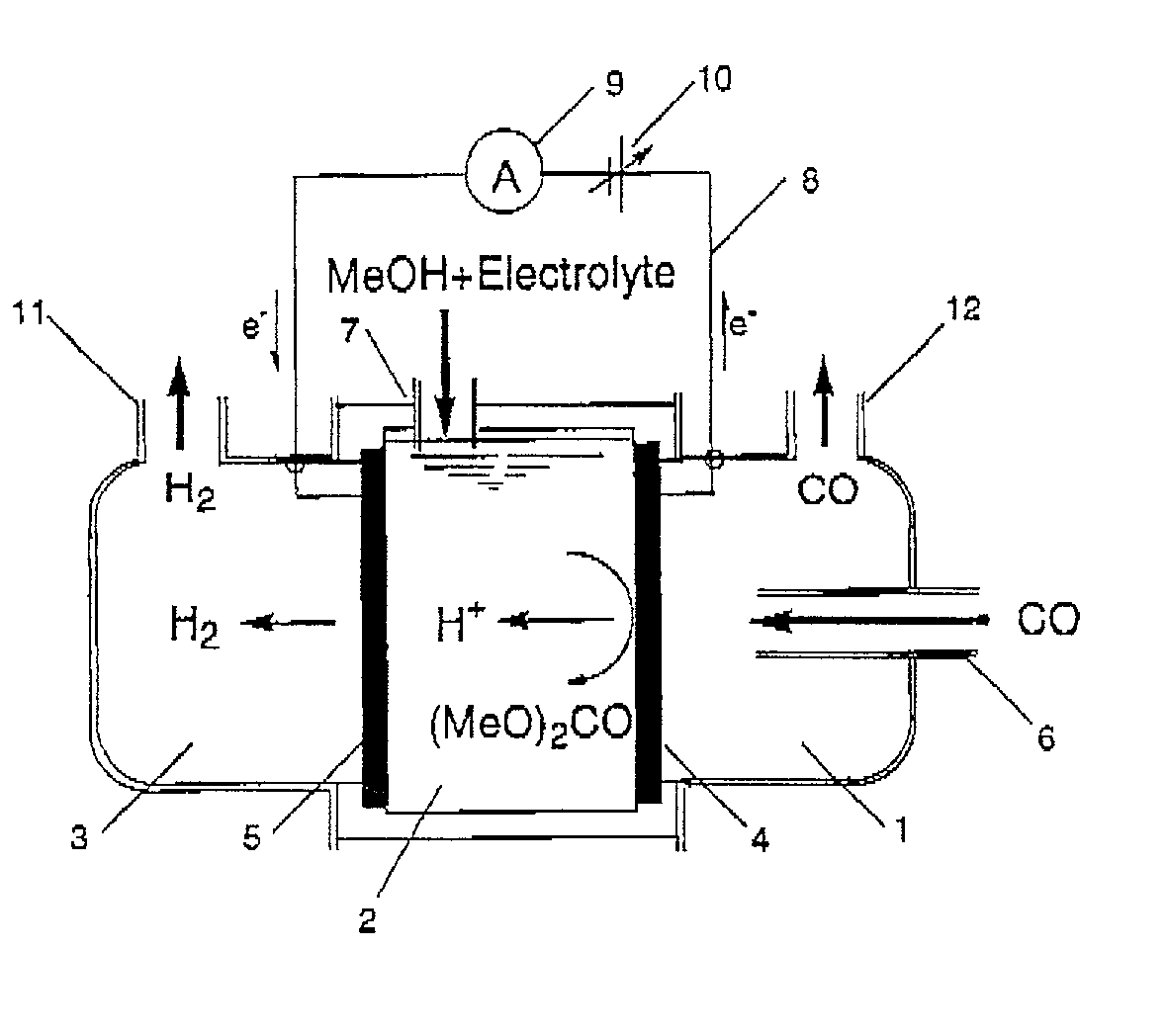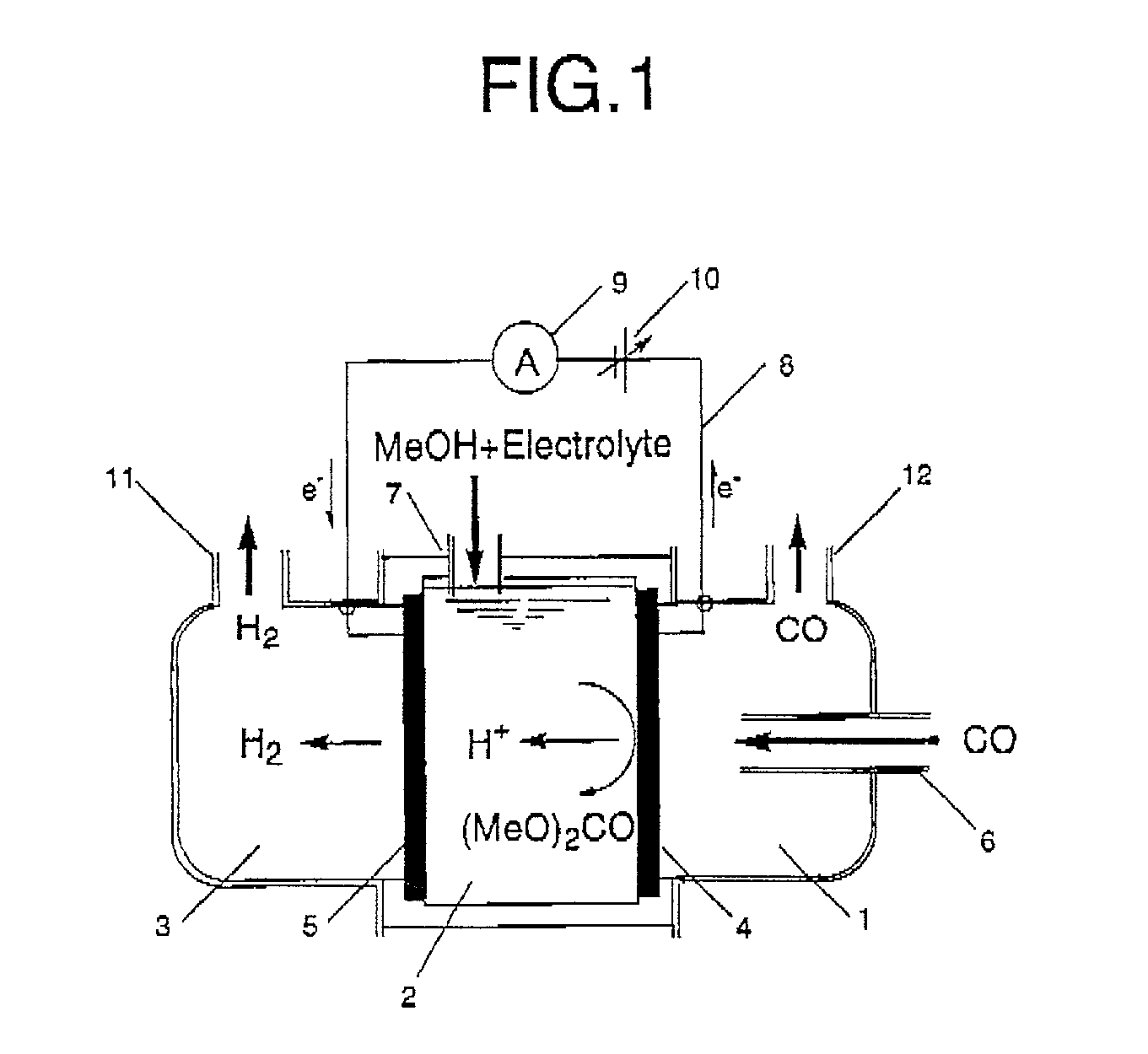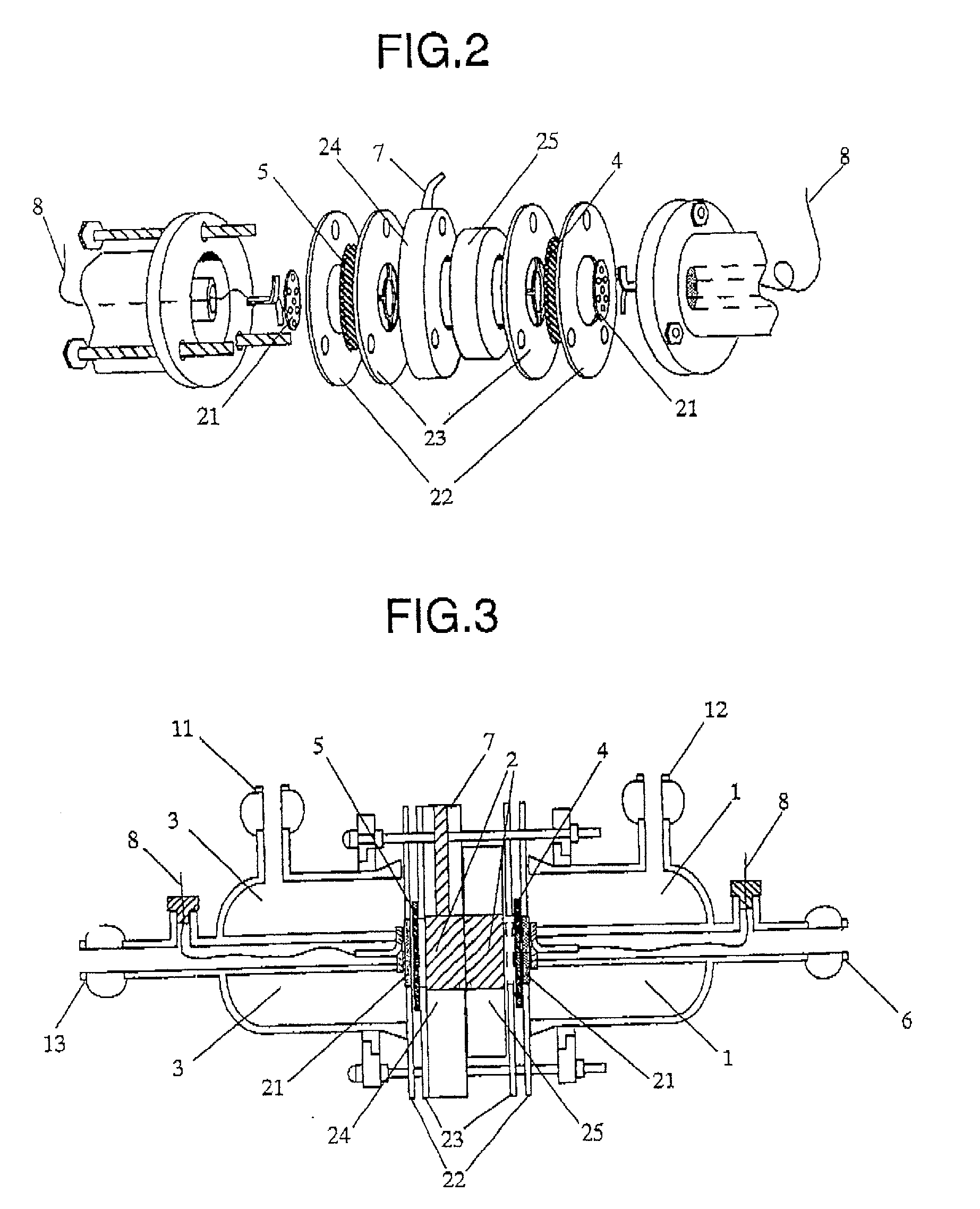Organic electrolysis reactor for performing an electrolytic oxidation reaction and method for producing a chemical compound by using the same
an electrolysis reaction and electrolysis reactor technology, applied in the field of electrolysis reaction reactors, can solve the problems of low selectivity for and yield of desired compounds, large amount of energy consumed, explosions,
- Summary
- Abstract
- Description
- Claims
- Application Information
AI Technical Summary
Problems solved by technology
Method used
Image
Examples
examples 2 and 3
[0251] The same procedure as in Example 1 was repeated except that a voltage of 1.7 V (Example 2) or 5.0 V (Example 3) was applied between the anode and the cathode. The results are shown in Table 1.
examples 4 to 15
[0252] The same procedure as in Example 1 was repeated except that, in stead of phosphoric acid, the below-mentioned electrolytes were individually used in the concentrations shown in Table 1: tetramethyl ammonium bromide, tetraethyl ammonium bromide, tetrapropyl ammonium bromide, tetrabutyl ammonium bromide, tetrahexyl ammonium bromide, tetraethyl ammonium perchlorate, tetrapropyl ammonium perchlorate, tetrabutyl ammonium perchlorate, ammonium perchlorate, and sodium perchlorate. The results are shown in Table 1.
example 16
[0253] The same procedure as in Example 13 was repeated except that the amount of palladium chloride was changed to 0.6 mg. The results are shown in Table 1.
2TABLE 1 Quan- Cur- tity rent of Elec- Concen- Voltage effi- elec-Example tro-tration applied Products (.mu.mol) ciency tricity No. lyte (M) (V) DMC OxDM DMM MF (%) (C) 1 H.sub.3PO.sub.4 1.1 3.5 18.2 1.2 0.4 1.6 58.5 6.0 2 H.sub.3PO.sub.4 1.1 1.7 4.0 0.3 0.5 1.9 43.1 1.8 3 H.sub.3PO.sub.4 1.1 5.0 20.9 2.4 0.4 1.5 47.1 8.6 4 Me.sub.4NBr 0.05 3.5 46.7 0.2 2.5 5.7 45.2 19.9 5 Et.sub.4NBr 0.05 3.5 52.2 0 2.2 6.7 47.5 21.2 6 Pr.sub.4NBr 0.05 3.5 32.6 0 1.8 7.1 38.5 16.3 7 Bu.sub.4NBr 0.05 3.5 42.7 0 2.0 6.2 45.7 18.0 8 Hx.sub.4NBr 0.05 3.5 33.2 0 1.7 3.4 42.4 15.1 9 Et.sub.4NClO.sub.4 0.05 3.5 62.0 6.9 2.3 3.0 61.4 19.5 10 Pr.sub.4NClO.sub.4 0.05 3.5 46.3 11.7 3.0 2.4 52.1 17.1 11 Bu.sub.4NClO.sub.4 0.05 3.5 51.1 2.4 1.7 2.2 58.5 16.9 12 NH.sub.4ClO.sub.4 0.05 3.5 69.2 24.5 2.5 2.7 59.1 22.6 13 NaClO.sub.4 0.05 3.5 62.6 10.1 2.2 3.2 ...
PUM
 Login to View More
Login to View More Abstract
Description
Claims
Application Information
 Login to View More
Login to View More - R&D
- Intellectual Property
- Life Sciences
- Materials
- Tech Scout
- Unparalleled Data Quality
- Higher Quality Content
- 60% Fewer Hallucinations
Browse by: Latest US Patents, China's latest patents, Technical Efficacy Thesaurus, Application Domain, Technology Topic, Popular Technical Reports.
© 2025 PatSnap. All rights reserved.Legal|Privacy policy|Modern Slavery Act Transparency Statement|Sitemap|About US| Contact US: help@patsnap.com



